Driftwood is one of those special things. They may look worthless and be an eyesore to many, but in some other people’s eyes, they are precious. As a result, a community of driftwood collectors and users emerged.
Driftwood collectors look for beautiful driftwood pieces to collect for use in their aquariums, gardens, or art projects. You may also be in this passion yourself.
Nevertheless, here are 10 things you need to know about driftwood.
- Driftwood Is Prized In Some Circles
- There Are Many Types Of Driftwood
- Driftwood May Need To Be Treated Before Use
- Driftwood Is A Popular Medium For Create Sculptures
- Driftwood Makes Great Furniture
- Driftwood Makes Great Garden Ornaments
- You Can Turn Driftwood Into A Business
- There Are Many Places With Driftwood In The US
- It May Be Illegal To Take Driftwood From Beaches Or Parks
- Driftwood Does Not Make Good Firewood
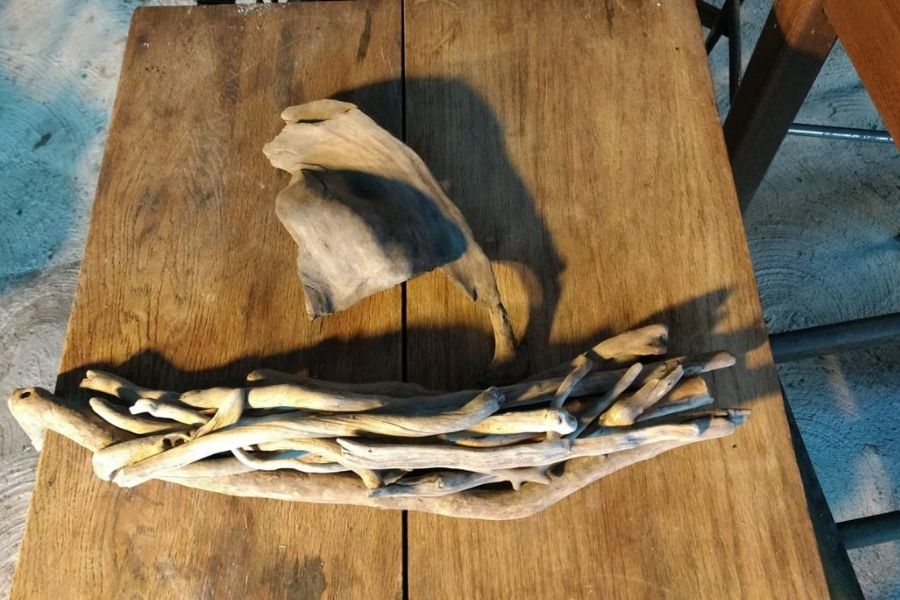
This article explores 10 things you need to know about driftwood, especially if you are new to the passion or want to deepen your knowledge in the subject.
#1 Driftwood Is Prized In Some Circles
Driftwood may lie on beaches, rivers, or forests and slowly dry and rot away, but to some, they are literally gold. This is because driftwood is appreciated by certain circles for its aesthetic value.
Driftwood is quite popular with fish keepers, who like to place some driftwood into their aquariums to beautify them. Driftwood also helps to create an environment closer to the natural habitat for the fish swimming inside.
Many fish keepers also noticed that their fishes love to hide and swim around the driftwood branches and holes and see driftwood as a playground for the fish. Driftwood is also used to hold onto green plants in an aquarium.
Gardeners are also known to price driftwood for use in their gardens. Some like to use it to hold onto plants. Some gardeners also like to use great pieces of driftwood as a centerpiece in a garden.
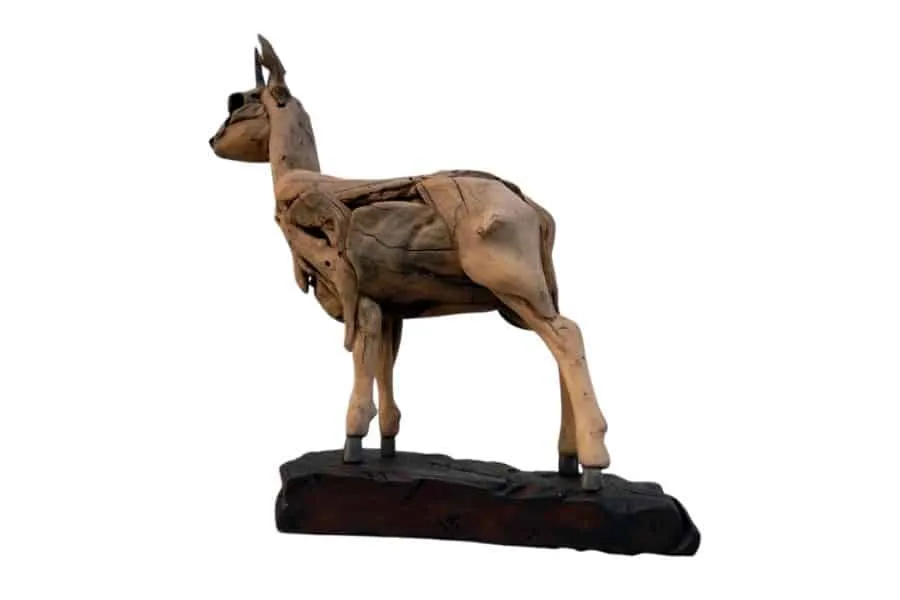
Artists also love driftwood and use them individually or in groups to turn them into small art pieces or larger sculptures.
Furniture makers also turn driftwood into furniture. For example, larger, thicker driftwood pieces are combined to form a base. A piece of glass is then placed on top of it, forming a coffee table.
If you are collecting driftwood for sale, you may want to keep these people in mind, as these are the people most likely to purchase your driftwood.
#2 There Are Many Types Of Driftwood
Driftwood is pieces of dead wood trunks or branches that have fallen off its tree. Therefore, you can assume that the number of driftwood types is similar to the number of actual tree species.
There are around 73,700 tree species worldwide, which means you can assume there are around 73,700 types of driftwood.
However, within driftwood collecting circles, some types of driftwood may be more popular than others. This is because driftwood may have the right shape, color, and branching patterns, making them interesting and collector worthy.
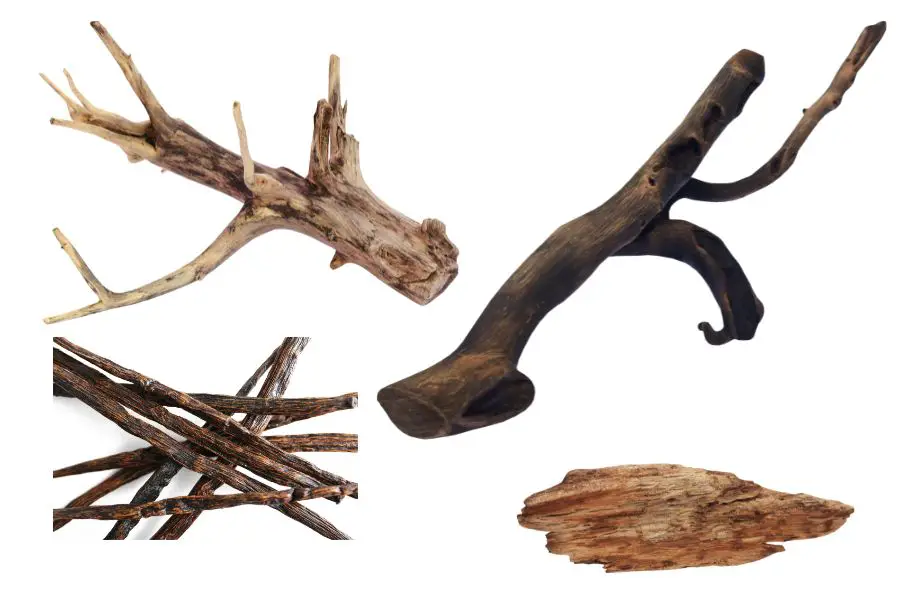
For example, Bonsai driftwood is well-loved by fish keepers since it has a nice, cultivated shape and branches that instantly lift their aquariums’ beauty. Some driftwood, such as Manzanita, may be loved because they can handle being soaked in water long term.
Some driftwood is also known for its longevity and hardiness, which may make them popular with furniture makers, such as Malaysian driftwood.
Depending on their art projects, sometimes artists may look for driftwood with a certain color, shape, and texture. This made driftwood with unique qualities popular, for example, Cholla, Corkscrew Willow, or Mopani.
You May Be Interested In: 21 Popular Driftwood Types
#3 Driftwood May Need To Be Treated Before Use
Driftwood may look like they have value and are beautiful. But if you think about it, it is a piece of dead wood, left to dry and decay away.
This means driftwood on its own may be slowly rotting away. As it rots, it may also become a place for microorganisms, bacteria, and fungi to grow and feast on its remaining nutrients.
If you intend to use your driftwood for weather projects you have in mind, you may need to first treat it. Treating driftwood usually involves killing any remaining microorganisms that may still be inside the driftwood and extracting the tannins and coloring inside the wood.
Common treatment processes involve boiling or soaking the wood in a bleach solution before sun drying it. Some may coat it with finishing, such as tung oil, linseed oil, or paint.
This is to ensure you slow down the driftwood’s decaying process as much as possible. This will, in turn, help the driftwood to remain structurally strong and function as a sculpture or furniture.

Clean and sterile driftwood also can avoid infection in the aquarium. Since an aquarium is a moist environment, the microorganism and fungi inside untreated driftwood may easily grow and infect your aquarium.
Untreated driftwood is also more likely to leach tannins into the water in aquariums, which may change the color of your aquarium water and poison the fish.
#4 Driftwood Is A Popular Medium For Sculptures
Driftwood is popular as a medium to create sculptures for many reasons. These include its affordability, ease of working, and unique physical characteristics.
Affordability: Common sculptures may be made of stones, such as marble, granite, or alabaster. These are rather expensive materials, so they may not be good for many artists.
With driftwood, it can be practically free. An aspiring sculptor can probably pick up a piece of driftwood from the beach (after checking the legal provisions), take the driftwood home, and get started.
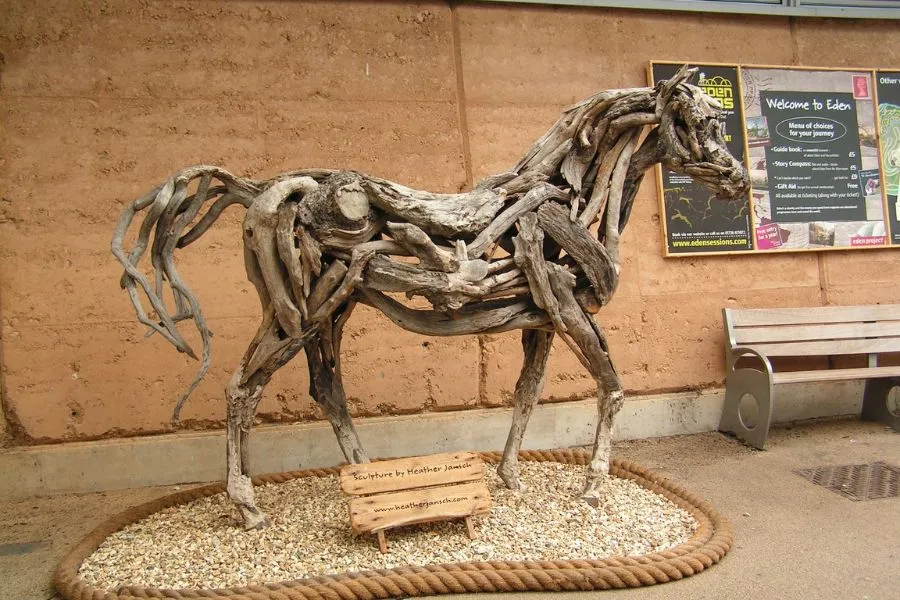
If the artist accidentally breaks the driftwood during the process, the artist will not be in financial pain. This is because driftwood is practically free. The artist can get another piece of driftwood and start again.
Compare that to a marble. Suppose the artist makes a mistake when carving marble. In that case, it may be a large financial setback, as the artist may need to purchase another slab of expensive marble.
READ MORE: How To Make A Driftwood Sculpture
Ease To Work With: Driftwood may be a much easier material for sculptors because it is wood. There are many tools a sculptor can use to manipulate the shape of driftwood, compared to stones or other deductive materials.
Unique Characteristics: Driftwood may be unique in its shape, color, and texture, and as such, may be preferred by artists to create driftwood sculptures. This allows driftwood artists to take multiple pieces of driftwood, arrange them in certain ways, and turn them into beautiful sculptures.
#5 Driftwood Makes Great Furniture
Driftwood is also popular with furniture makers, as they value its unique shape, form, texture, and relevant strength.
Driftwood could be used to make basic furniture, down to the more intricate pieces. For example, sticks of thin, long driftwood could be arranged in a column and tied together to form a wall of sorts. This piece can function as a divider in an open-air loft or studio unit.
Another popular way to make furniture out of driftwood is to use it as a structure to support the weight. For example, several thick and sturdy driftwood trunks could be arranged together. The top part is sawed flat, and a flat surface is placed on top.
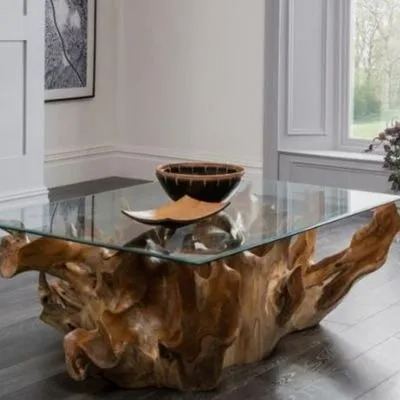
The method can easily turn driftwood into tables, chairs, benches, etc. Another popular way is to use driftwood as a holder for light bulbs turning it into table lamps.
Driftwood furniture may command higher prices, as the piece of wood used are unique. This means you will not find similar furniture pieces anywhere in the world.
#6 Driftwood Makes Great Garden Ornaments
Driftwood is also prized by gardeners, as it can be used in various ways to support a gardening project.
One way is to use it for decoration. You may see some gardeners stick in longer and thinner driftwood pieces along the pathway of a garden and then tie some lighting to it. This creates a rustic-looking garden pathway.
Some gardeners may have a more artistic mind, and when seeing a great piece of driftwood, they may want to turn it into a centerpiece of the garden. The gardener may create a bed of sand or river rocks, in a circular shape. Then the driftwood is placed in the center of it. This creates a rather zen look, similar to some Japanese-style gardens.
On a more practical level, a piece of thick, sturdy driftwood may be used as a tying pole for some plants and trees. Some also enjoy growing succulent plants such as cacti on driftwood, as these plants may find ways to bend and fit into the holes of the driftwood.
#7 You Can Turn Driftwood Into A Business
Now that you have seen how driftwood may be used in gardening, aquarium, furniture, and art, you may start to consider if you can sell driftwood. The answer is yes, you can collect and sell driftwood.
However, some important details about starting a driftwood collecting and trading business exist. You need to consider the customers you are selling to and their demands.
This is because different customer types may have different needs for their driftwood. For example, furniture makers may like their driftwood thin and perhaps treated without finishing. They may not like thin driftwood with many branches as they may not make a good furniture base.
Fish keeps, in turn, may want smaller driftwood pieces, and branches may actually appeal to them. Their biggest request, usually, is to ensure that the driftwood piece is treated, disinfected, and can sink into the aquarium.
If you sell to fish keepers, you will need to treat the driftwood pieces yourself and pre-soak them to make them sink into the water.
Your location may also determine your customers. If you live in a beach community, you may encounter more furniture makers and artists. In contrast, if you live further inland, your customers may be mostly fishkeepers or gardeners.
READ MORE: Can You Collect And Sell Driftwood?
#8 There Are Many Places With Driftwood In The US
Driftwood essentially comes from a dead tree, which means wherever there are trees, you will likely encounter driftwood pieces.
If you are serious about the driftwood collection, you can embark on a driftwood hunting trip. It is, in fact, one of the things passionately driftwood collectors do regularly.
In the US, there are a wide array of places to look for driftwood. Beaches, rivers, parks, and many more places. You can go and pick up driftwood for your own use.
READ MORE: Best Beaches To Find Driftwood
However, if you are on private property, check with the owner if it is ok for you to scour the place for some driftwood. In many cases, they are ok with it.
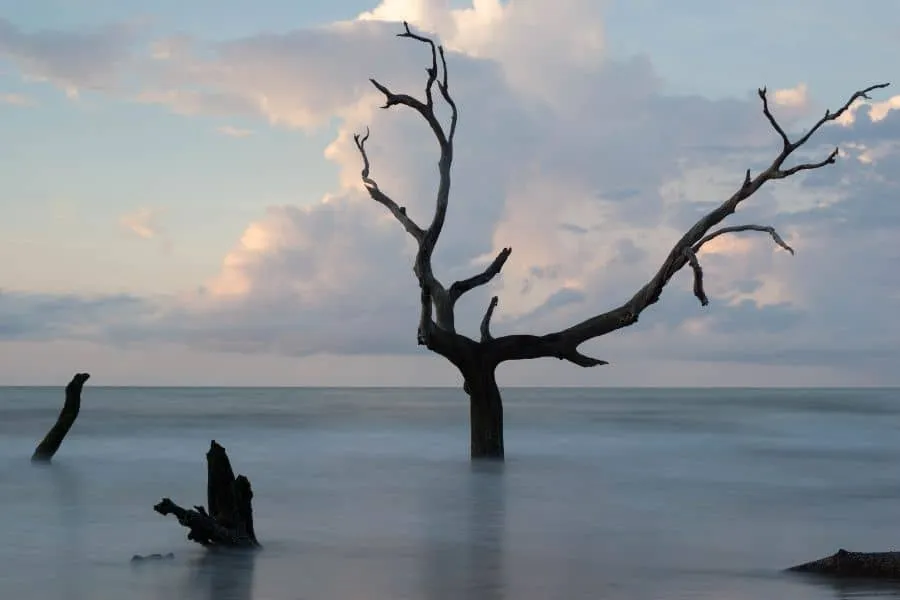
When picking driftwood pieces, there are some general rules about them. The first is to try to pick up driftwood from running water. This is because if the driftwood is in stagnant water, it is likely chock full of microorganisms and fungi, making the treatment process harder.
Secondly is to try not to pick up overtly thick driftwood. The reason is that thick driftwood may be harder to treat and may need a longer boiling or soaking period, making it harder for you.
READ MORE: Where Is The Best Place To Find Driftwood?
#9 It May Be Illegal To Take Driftwood From Beaches Or Parks
If you intend to pick up driftwood for personal collection or selling, contact the local authorities and check whether you are allowed to do so. This is because the law and rules may differ depending on the owner of the property you intend to collect driftwood from.
For example, suppose you are on private property. In that case, the natural thing to do is to check with the property owner itself whether you can take some pieces of driftwood away. In many cases, most property owners will be happy about that, as they may see it as an eyesore.
In fact, they may be happy that they get to remove it without having to pay for anyone to do that.
If the location is a federal or state park, you may need to check with the relevant authorities. The rules may be tighter in these areas, so you want to be more careful.
Some park authorities may allow you to pick up driftwood only for personal collection. This means you may be forbidden to away a lot of driftwood here. Taking away a lot of driftwood may be seen as using driftwood for commercial purposes, which may have different law provisions. A permit is often required in this case.
The same rules apply. Some park authorities may allow you to do so since they may also see driftwood as an eyesore or a potential hazard to visitors to the park. They may even assist you in the removal process as well.
However, some parks forbid the removal of any driftwood pieces. This makes sense since if everyone is taking away driftwood for their personal collection, there may not be much driftwood around the park anymore.
#10 Driftwood Does Not Make Good Firewood
Suppose you have leftover driftwood lying around and are running out of ways to warm yourself in the winter. You may be tempted to simply chuck driftwood into the fireplace to keep warm.
This is generally a bad idea. This is because driftwood may have a lot of metal salts in it. These metal salts, when burned, may be dangerous to our health. This is especially true for driftwood that has spent a considerable time at sea.
If you chuck driftwood into a fire, you may notice that they give out a blue or violet-like hue instead of the regular red or yellow hue. The color happens because the metal salts are being burned.
READ MORE: Why Does Driftwood Burn Blue
When burned, these metal salts may release unknown chemicals that may harm us, such as dioxins. Dioxins are known to be carcinogenic or can cause cancer if we breathe them in.


